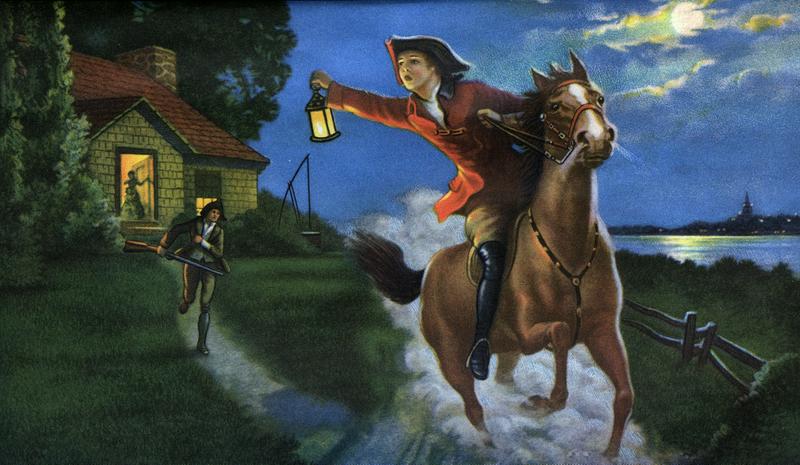The Real Story Of Paul Revere’s Ride
By | November 10, 2019

Everyone knows the story of Paul Revere’s ride. In order to warn the colonists of Massachusetts that the British army was about to attack, Paul Revere rode his horse through the streets, shouting “The British are coming! The British are coming!” This timely warning allowed the colonists to be prepared for the attack and Paul Revere has gone down in history as a pivotal figure in the American Revolution. There’s just one problem: that well-known story is almost entirely false.
Paul Revere was an important player in the American Revolution and he did warn the colonists of the British attack. But the details of that night have been significantly altered. Most of the blame for this lies with poet Henry Wadsworth Longfellow, who wrote a poem in 1860 entitled “The Midnight Ride of Paul Revere,” bringing attention to an otherwise obscure historical event. While it is believed that Longfellow had an accurate account of the event from which to base his poem, he took considerable creative license in his retelling.

One thing that Longfellow changed was the signal lanterns used to warn of the British troop's march. In the poem, the signals lanterns are used to send a message to Revere that the British troops had left Boston and it was this warning that prompted his ride. But that’s not what happened. It was actually Revere who used the signal lanterns to notify the Sons of Liberty in Charleston of the impending attack, just in case he was unable to deliver the message in person. This turned out to be a wise decision as Revere never actually reached his destination of Concord, Massachusetts.

Revere’s ride was actually prompted by Dr. Joseph Warren, who sent him to warn Concord of the impending attack, but also asked him to stop in Lexington to warn John Hancock and Samuel Adams that British troops were planning to arrest them (though this later turned out to be false intelligence). Warren had already sent one messenger, William Dawes, to Lexington, though he and a third messenger, Samuel Prescott, failed to make an appearance in Longfellow’s poem.

Revere arrived in Lexington around midnight, after stopping in Charleston to borrow a horse and to verify that they’d received his signal. There is no record of him yelling anything as he rode and he most likely would have been traveling much more discreetly. He did, however, make enough noise to be chastised by the sentry guarding the house of Adams and Hancock. Revere’s reply to the suggestion that he makes less noise was “Noise! You’ll have noise soon enough before long! The regulars are coming out!”

After a brief period of rest, both Revere and Dawes set out for Concord, accompanied by Samuel Prescott. But before they could reach their destination, they were detained by a British patrol. Both Dawes and Prescott managed to escape, but Revere was taken into custody. It was actually Prescott who went on to warn both Concord and Lincoln of the British attack. Revere was eventually released from British custody but was without a horse and therefore had no choice but to walk back to Lexington.

